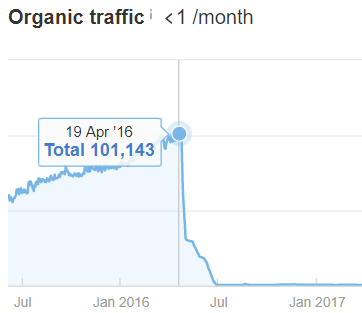The great debate between SEOs and Google – what is better for SEO, subdomains or subdirectories/subfolders?
This debate has been raging on for over a decade and still, the answer isn’t clear.
Google states that they treat subdomains and subdirectories equally which is completely true – Google crawls, indexes and ranks both the exact same way.
This confirms what Matt Cutts said in October of 2012. But not all SEOs agree.
Why don’t SEOs agree?
SEOs aren’t unified in their response to which is better for SEO. There’s a huge number of studies that advocate subdirectories for SEO rather than subdomains – and vice versa.
Furthermore, Google and SEOs have completely different points of view.
Google states that subdomains and subdirectories are crawled, indexed and ranked the same way. But from a webmaster’s point of view, they don’t take account of the amount of effort and resources that go into maintaining and securing subdomains. Yet subdirectories require little resource to maintain.
To add to the confusion further, many experts have studied the impacts of migrating subdomains to subdirectories – which has then resulted in a huge improvement in search visibility. Take a look at Monster Jobs, for example:


Monster has seen a huge increase in search traffic just by migrating from a subdomain to a subdirectory URL structure. This goes completely against what Google had previously said regarding both being treated equally.
Let’s dig a little deeper.
What is a Subdomain?
A subdomain is an additional part to your main domain – and are often created to organise and navigate to different parts of your website.

Subdomains are generally used when a website needs to allocate a portion of its own server and resources. Webmasters will do this for a variety of different reasons.
Subdomains and subdirectories share a lot of similarities. Both share a server’s ‘Home’ directory structure, for example. But, it’s the subtle differences between the two that impact SEO.
One of the key differences is that subdomains are not paths within a domain – unlike subdirectories.
This means that subdomains are their own entity, with their own link value and ability to rank for keywords – completely independently to the root domain.
Why use a subdomain?
There are a lot of reasons why a webmaster would use a subdomain over a subfolder.
Technical limitations
There may be limitations on access of the root domain, thus making subdomains a great choice due to ease of use. It is also not uncommon for larger websites to comprise of multiple CMSs – with the root domain focusing on the e-commerce side being hosted on Magento, while the blog is hosted on WordPress, for example.
Making the multiple CMSs work and function in harmony on the root domain can often be a laborious and difficult task. Generally, these are best kept as separate entities.
These technical limitations are more often found in larger organisations that have a vast technical infrastructure and site architecture.
Access control
Allowing different teams to access specific parts of the website is extremely important in larger organisations, especially those that will have multiple divisions that may operate independently.
It is often a lot easier to grant a team the access they need on a subdomain made for them – i.e. giving the recruiters and HR staff access to a career’s subdomain, rather than giving them access to change large portions of the website.
Separating parts of the business
Quite often, organisations will want to target different markets while utilising the power of their root domain. This often results in subdomains functioning as a separate business within the overall organisation.
This separation can often work quite well regarding SEO.
Subdomains for SEO
As previously mentioned, subdomains are treated as their own entities, gathering keywords and links independently of the root domain. This can allow for some seriously strong silos of content.
Subdomains are also great for audience segmentation. Segmenting can allow creators (podcast makers, for example) to separate their audiences between podcast, blog and even store subdomains.
However, my own experience shows that Google treats subdomains as separate sites that inherit little equity from the root domain. This may leave a lot of potential strength untapped.
What is a Subdirectory?
Subdirectories are specific parts of a URL that will house a subset of content. You can find individual directories following the root domain.

Subdirectories are often implemented as they are easy to use. With subdirectories, there is no need to set up another CMS or configure server resources as they all operate on the same platform.
Why use a subdirectory?
Subdirectories are favoured by many SEOs for multiple reasons.
Ease of use
As previously mentioned, ease of use is a great reason to use a subdirectory rather than a subdomain. This is because the knowledge barrier in creating subdirectories is much lower than that of a subdomain.
There are few system admin tasks required, no need to purchase a wildcard SSL to keep it secure or additional Google properties to implement. This makes adding subdirectories extremely quick and easy.
Domain level metrics
Subdirectories are NOT independent of the root domain, therefore inheriting the root domain’s authority. This means that pages within subdirectories will carry more weight behind them when compared to those on a subdomain.
Furthermore, pages within subdirectories can pass back valuable equity to the overall domain, and any pages that are internally linked within the pages. Combine this with increased crawl rate due to constantly adding more content and it makes for a great recipe for SEO!
Subdirectories for SEO
Subdirectories are great for SEO. As mentioned previously, they inherit the root domain’s authority – meaning high authority websites can rank for competitive keywords using subdirectories, as well as passing some authority back. This is not the case for subdomains which are effectively starting from scratch regarding authority.
Subdirectories will also help keep overheads low as efforts are concentrated on just the one website. This is especially important for SEO when we consider page speed. By having subdomains, the improvements are having to be duplicated across the different properties, draining valuable resources.
Finally, from a data analysis point of view, having everything located on the same website will greatly improve the SEO strategies moving forward, allowing for quick, informed decisions to be made.
